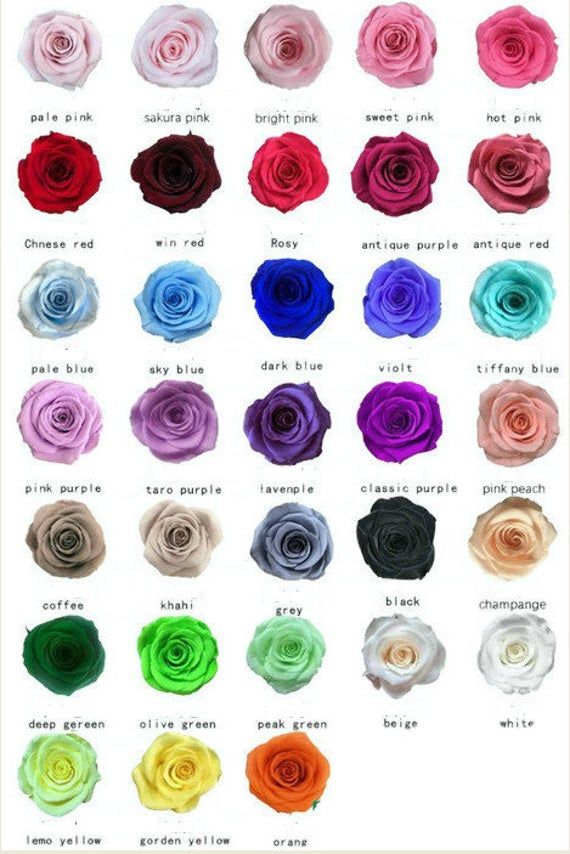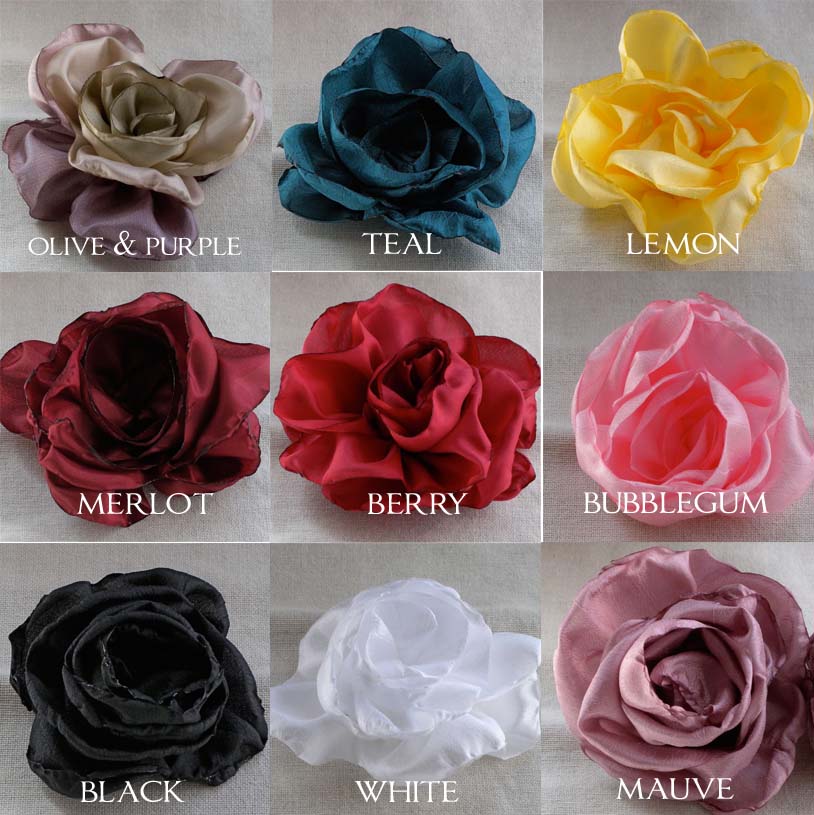Have you ever wondered how many colors of roses exist? We all associate roses with romance and beauty, but when it comes to their hues, we often think of the classic red, pink, and white. The truth is, the world of roses is much more colorful than we might initially realize! This journey will explore the captivating diversity of roses, uncovering the fascinating history of rose breeding and the secrets behind those stunning colors.

Image: www.letsdiskuss.com
Understanding the color spectrum of roses is more than just a casual floral curiosity. It unlocks a deeper appreciation for the artistry and dedication that goes into creating such stunning varieties. Learning about the colors, their history, and the science behind them allows us to better understand the evolution and development of these breathtaking flowers.
The Spectrum of Colors
While many believe that the primary colors of roses are red, pink, and white, the reality is significantly more vibrant. Here are some of the most prominent colors and the fascinating stories behind them:
Red: Passion and Romance
Red roses are the epitome of romance, representing passion, love, and desire. The iconic red hue is often associated with the crimson roses that have been cultivated for centuries, their deep color a tribute to the enduring passion of love. While the iconic red roses are indeed striking, the color spectrum within the red category ranges from deep crimson to vibrant scarlet, and even soft, dusty rose shades.
One notable example of a fiery red rose is the “Grand Prix” rose. This classic variety boasts an intensely deep red color, perfectly embodying the passionate nature of its meaning.
Pink: Grace and Elegance
Pink roses symbolize grace, elegance, and appreciation. From the delicate blush of “Sweetness” to the vibrant fuchsia of “Pink Intuition,” pink roses offer a diverse range of hues, capturing a romantic sentiment that is both charming and sophisticated.
Pink roses are often associated with femininity, but their elegance transcends gender boundaries. Their softer tones and delicate beauty make them an ideal choice for any occasion, from a birthday celebration to a romantic gesture.

Image: pearahsan.blogspot.ca
White: Purity and Innocence
White roses are symbols of purity, innocence, new beginnings, and reverence. Their association with weddings and other formal events is a testament to the elegance and symbolism they represent. White roses are also associated with the fragility of beauty and the ephemeral nature of life.
One of the most popular white rose varieties is the “White Eden.” Its pure white petals and gentle fragrance embody the timeless beauty of simplicity and grace.
Yellow: Friendship and Joy
Contrary to the misconception that yellow roses symbolize jealousy, they actually represent friendship, joy, and new beginnings. They bring a sense of warmth and sunshine to any occasion.
The vibrant yellow of the “Golden Celebration” rose, with its strong fragrance and large blooms, embodies the cheerful and uplifting essence of yellow roses.
Beyond the Basics
The realm of roses doesn’t stop at the traditional red, pink, white, and yellow. Rose breeders have been experimenting with colors, creating a spectrum of hues that extends far beyond the basic four:
Orange: Enthusiasm and Passion
Orange roses are a relatively recent addition to the rose world, but they have quickly gained popularity. They symbolize enthusiasm, passion, and desire, making them an impressive and unique choice for gifts or floral arrangements.
The “Apricot Nectar” rose, with its blend of apricot and orange tones, embodies the warmth and zest of this bold color.
Lavender and Purple: Enchantment and Royalty
Lavender and purple roses are often associated with enchantment, royalty, and mystery. Their delicate hues, ranging from soft lilac to deep violet, add a touch of elegance and intrigue to any bouquet or garden.
The “Blue Moon” rose, with its distinctive lavender and purple hues, embodies the mystique and allure of these captivating colors.
Green: Balance and Harmony
Though less common than other colors, green roses are increasingly gaining popularity. They symbolize balance, harmony, and growth, representing the restorative power of nature.
The “Green Rose” variety, with its distinctive lime-green hue, embodies the refreshing and unique beauty of this unconventional color.
The Science Behind the Colors
Understanding how rose colors are created involves delving into the intricate world of plant pigments. The color of a rose is determined by the presence and concentration of pigments called anthocyanins, carotenoids, and flavonoids.
Anthocyanins are responsible for the red, purple, blue, and lavender hues in many flowers. The pH of the soil and the presence of specific genes influence the concentration of anthocyanins, leading to the variations in color we observe.
Carotenoids, present in many fruits and vegetables, contribute to the orange and yellow colors in roses. These pigments are also responsible for the rich red pigments in some rose varieties.
Flavonoids, also known as bioflavonoids, influence the color of roses and play a role in their fragrance. They can contribute to subtle yellow or white hues, influencing the overall tone of a rose’s color.
Breeding for Colors
For centuries, rose breeders have dedicated themselves to creating new and exciting rose colors. Through meticulous cross-pollination and selection, they have been able to develop roses that exhibit a wider variety of colors than ever before.
Modern techniques, like genetic manipulation, have further expanded the possibilities. Scientists can now directly modify the genes involved in pigment production, leading to the creation of even more extraordinary colors. However, ethical considerations surrounding the alteration of natural plant characteristics are ongoing discussions within the scientific community.
The Cultural Significance of Rose Colors
Roses have a rich history of symbolism and meaning across cultures. Their colors have been imbued with specific connotations that have evolved over centuries. In many cultures, red roses are associated with passion, love, and romance, while white roses represent purity, innocence, and new beginnings.
The meaning attributed to rose colors can vary depending on the culture and the specific context. For example, in some cultures, yellow roses symbolize friendship and joy, while in others they symbolize jealousy or betrayal.
Understanding the cultural significance of rose colors is important when choosing roses for gifts or expressing emotions. It allows us to communicate effectively through the language of flowers, conveying the desired message or sentiment.
How Many Colors Of Roses Are There
Conclusion
The world of roses is undeniably vibrant, showcasing a spectrum of colors that captivates the senses and inspires the imagination. From the iconic red that symbolizes passionate love to the delicate lavender that whispers of elegance and mystery, each color tells a story and carries its own unique meaning.
Next time you encounter a rose, take a moment to appreciate its beauty and its rich history. Delve deeper into the fascinating world of rose breeding and the science behind their colors. You might be surprised by the depth and variety that exists within the seemingly simple world of roses.
Share your experience! What is your favorite rose color and why? Tell us about your favorite rose variety or share your insights on the cultural significance of roses. Let’s continue to explore and appreciate this enchanting world together.

:max_bytes(150000):strip_icc()/OrangeGloEverydayHardwoodFloorCleaner22oz-5a95a4dd04d1cf0037cbd59c.jpeg?w=740&resize=740,414&ssl=1)




